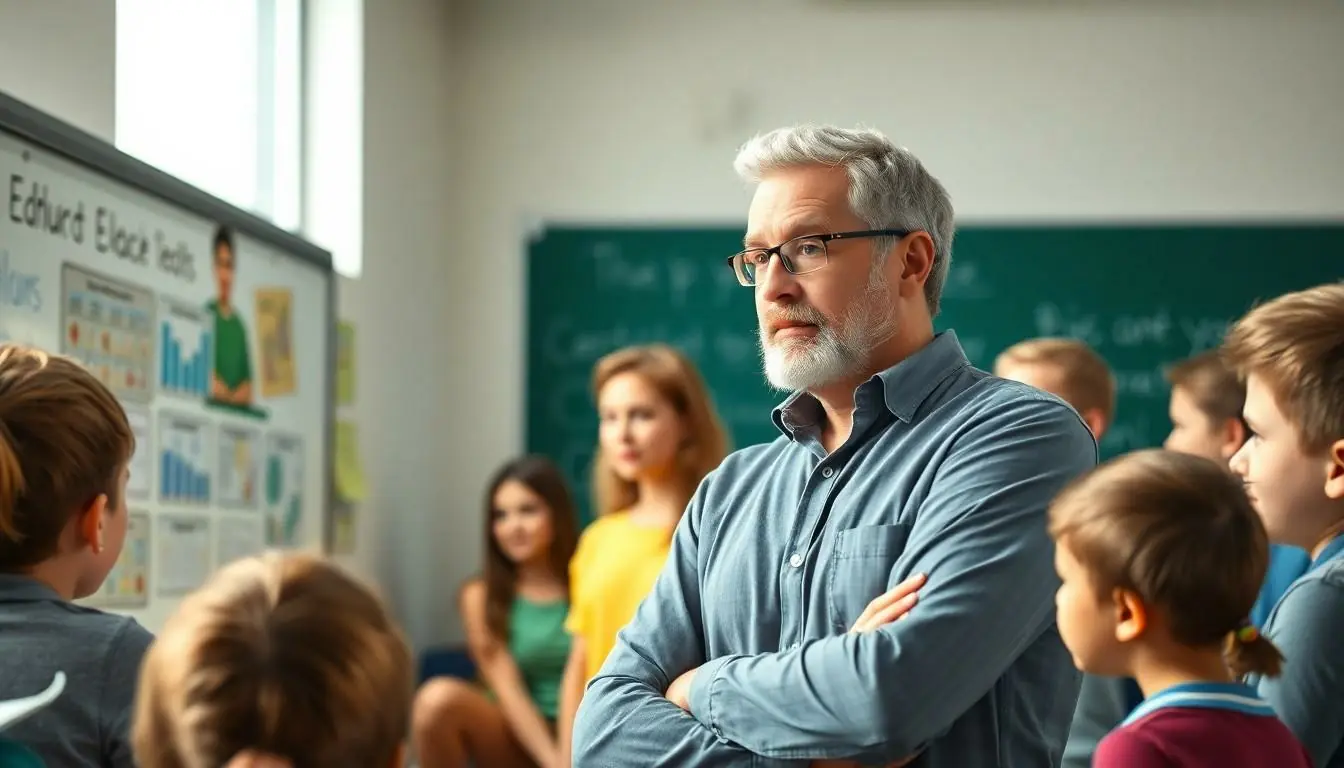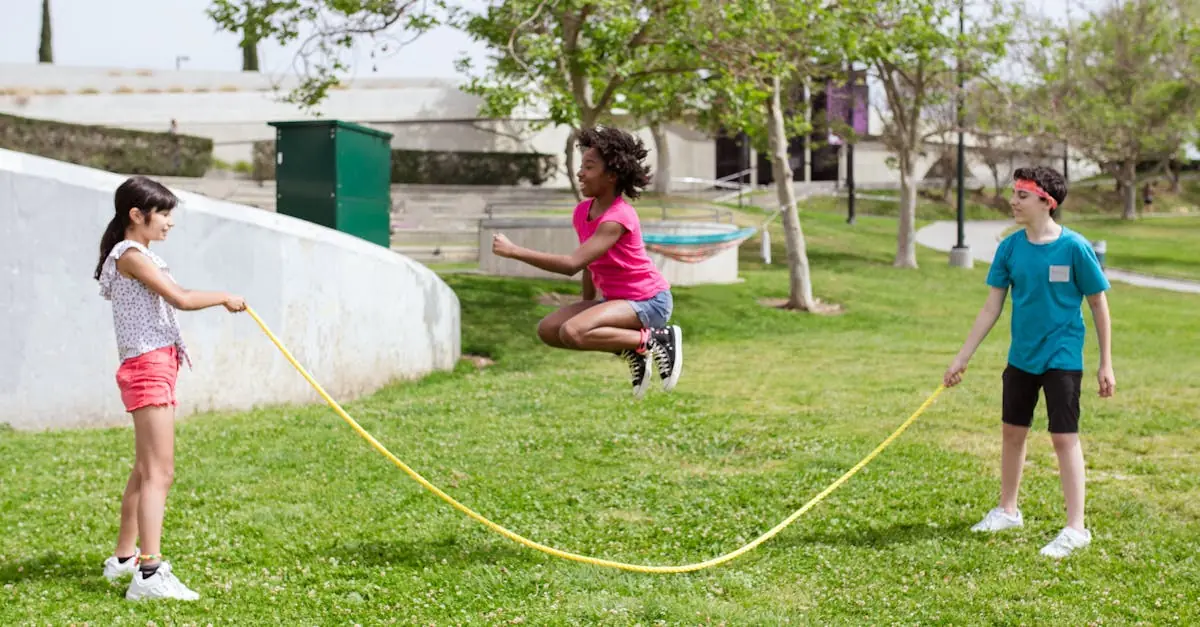In a world where AI can whip up essays faster than a student can say “procrastination,” the question looms: Can teachers spot the handiwork of ChatGPT? Imagine a classroom where students try to pass off AI-generated brilliance as their own, while teachers play the role of digital detectives, armed with red pens and a keen eye for authenticity.
Table of Contents
ToggleOverview of ChatGPT
ChatGPT, developed by OpenAI, represents an advanced conversational AI system. This tool generates human-like text responses based on user inputs.
What Is ChatGPT?
ChatGPT stands for Chat Generative Pre-trained Transformer. This AI model focuses on natural language processing and generates human-like dialogue. Its training includes a diverse range of internet text, allowing it to understand complex language patterns. Because of its extensive training data, it can engage in conversations across various topics. Educators and students alike recognize its potential for assisting in writing, brainstorming, and learning.
How Does ChatGPT Work?
ChatGPT works by processing input through a neural network architecture. This model predicts the next word based on prior words in a sentence. It employs deep learning techniques to refine and enhance its responses. When a user inputs a prompt, ChatGPT analyzes context and generates coherent text. By leveraging large datasets, it identifies patterns and structures in language, creating fluid and relevant conversations. In educational settings, its capability prompts discussions surrounding authenticity and originality in student work.
Detection Methods

Identifying AI-generated content, particularly from tools like ChatGPT, poses significant challenges for educators. Teachers employ various strategies to discern authentic student work from AI-produced essays.
Traditional Methods of Detection
Teachers rely on traditional methods such as direct questioning and comparison to known student writing styles. Asking students to elaborate on their work often reveals inconsistencies or weaknesses in AI-generated material. They also analyze the level of complexity and depth in the submitted work. Sudden shifts in writing quality can raise red flags. In addition, tutors may discuss assignments in class, encouraging open dialogue about concepts and ideas. Observing a student’s understanding in real-time helps identify whether they grasp the material or are simply presenting AI-generated responses.
Technological Solutions
Technological solutions increasingly assist educators in detecting AI-generated content. Various software tools are designed to analyze text patterns and flag inconsistencies. For instance, programs that assess writing style differences can highlight deviations from a student’s typical submissions. AI detection tools utilize algorithms to evaluate text for characteristics unique to machine-generated content. Additionally, plagiarism detection software can identify similarities between student submissions and existing content online. Continuous advancements in technology aim to support teachers in maintaining academic integrity within their classrooms.
Teacher Perspectives
Teachers grapple with significant concerns regarding academic integrity. AI-generated content often blurs the lines between student work and machine-aided writing. Submissions originating from tools like ChatGPT can mislead educators and distort assessments of student capabilities. Trust in the work submitted hinges on students’ adherence to honesty in their academic endeavors, making this an urgent issue for many educators.
Concerns About Academic Integrity
Maintaining academic integrity is a primary focus for teachers. Utilizing AI tools raises questions about the authenticity of student submissions. Originality in essays and projects reflects a student’s understanding of the material, which AI-generated content can compromise. Cases of students employing ChatGPT to complete assignments undermine learning processes and distort evaluations. Without proper frameworks to address these issues, the educational system’s standards may face significant challenges.
Insights from Educators
Educators provide diverse insights on tackling AI-generated content. Many adopt a proactive stance, encouraging discussions about the implications of using AI tools. Direct engagement with students fosters deeper understanding and diminishes the likelihood of academic dishonesty. Some educators recommend integrating assignments that require personal reflection, making AI contributions less viable. Observing students in collaborative settings also allows teachers to assess understanding effectively. Utilizing multiple strategies enhances their ability to maintain authenticity in student work.
Limitations of Detection
Detecting AI-generated content poses significant challenges for teachers. Many educators struggle to distinguish between human-created work and text generated by tools like ChatGPT.
Challenges in Identifying AI-Generated Content
Inconsistencies in writing style help teachers identify possible AI involvement. Recognizing a sudden change in vocabulary or sentence structure raises red flags. Lack of personal anecdotes often signals the use of AI-generated responses. Many students might submit polished essays without the typical errors that reflect their writing capabilities. Increased reliance on these tools complicates assessments of learning outcomes. Educators face a dilemma in determining genuine understanding versus AI-aided submission.
The Evolving Nature of AI Tools
AI tools continuously improve, making detection more complex. ChatGPT and similar systems become increasingly adept at generating human-like text. New algorithms enhance coherence and context awareness, further masking AI-generated output. Rapid advancements often outpace existing detection methods, leaving educators at a disadvantage. Technology progresses alongside educational practices, creating a dynamic where teachers must adapt swiftly. Adopting novel strategies for detection remains essential to address these ongoing challenges.
The challenge of detecting AI-generated content in educational settings is an ongoing concern for teachers. As technology advances the lines between human and machine-produced work blur further. Educators must adapt and develop new strategies to uphold academic integrity and ensure that assessments accurately reflect student understanding.
By fostering open discussions about AI’s role in education and encouraging assignments that require personal insight, teachers can create an environment that values original thought. Embracing technology while maintaining high standards is crucial in navigating this complex landscape. As AI tools evolve, so too must the approaches educators take to discern authentic student work from automated responses.






